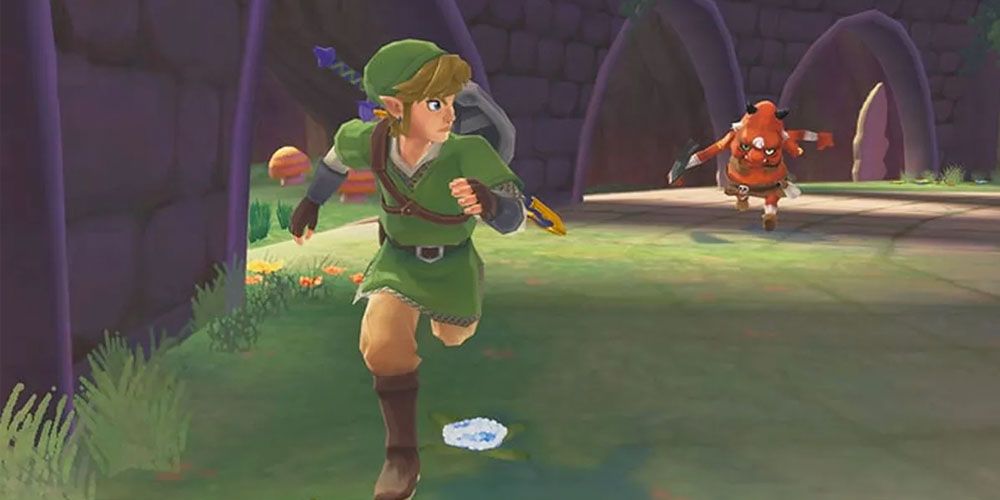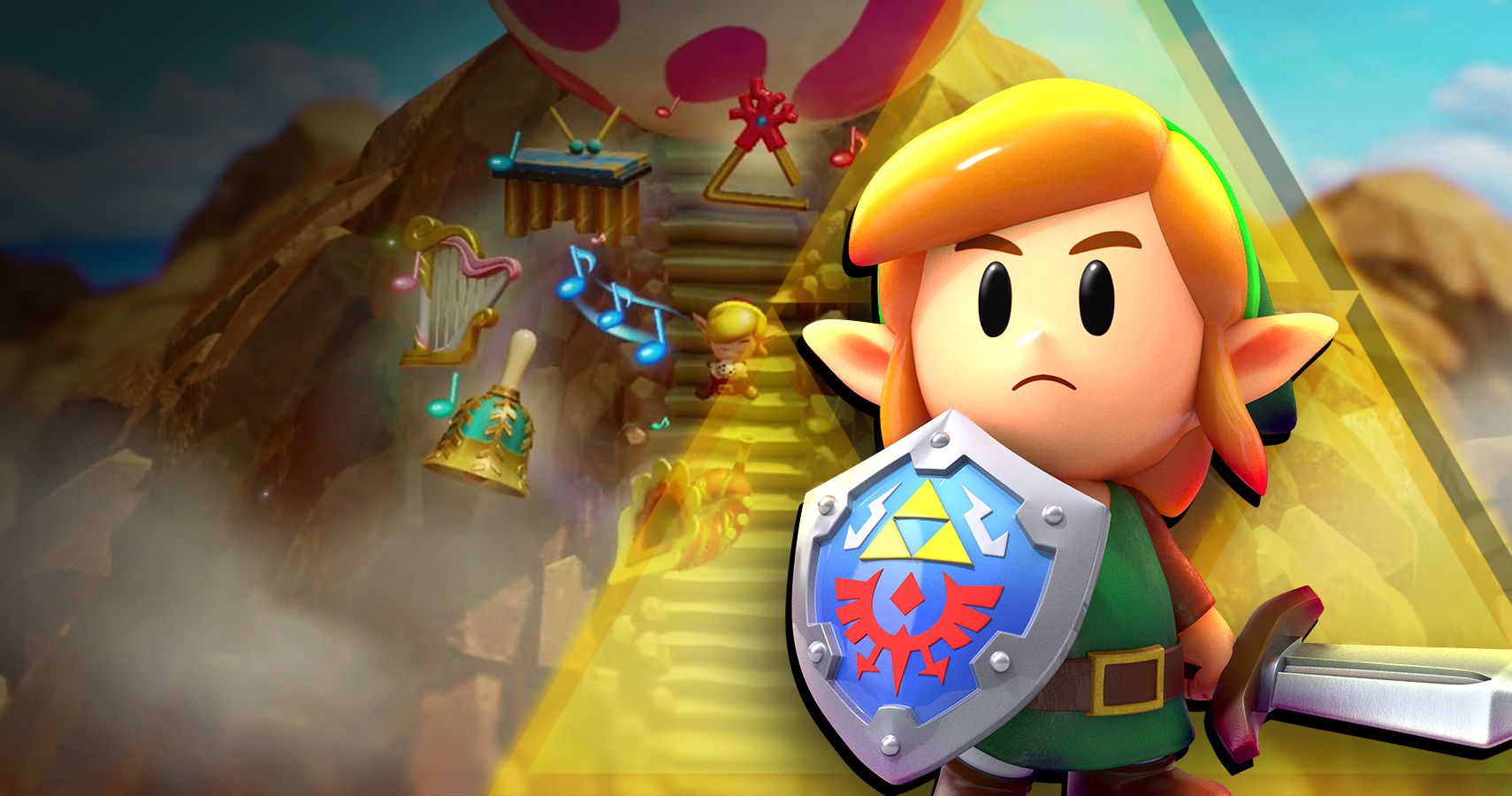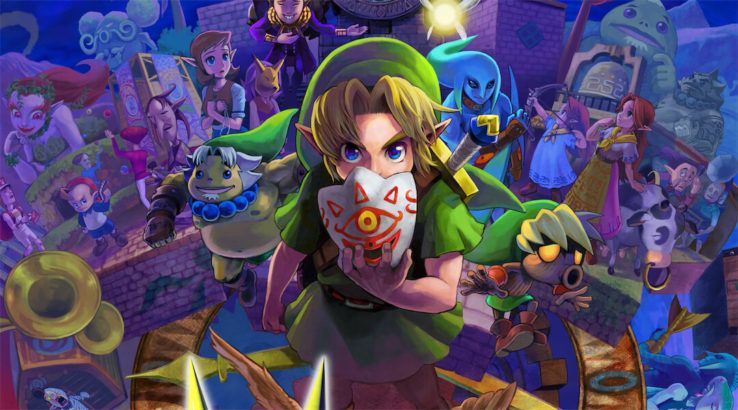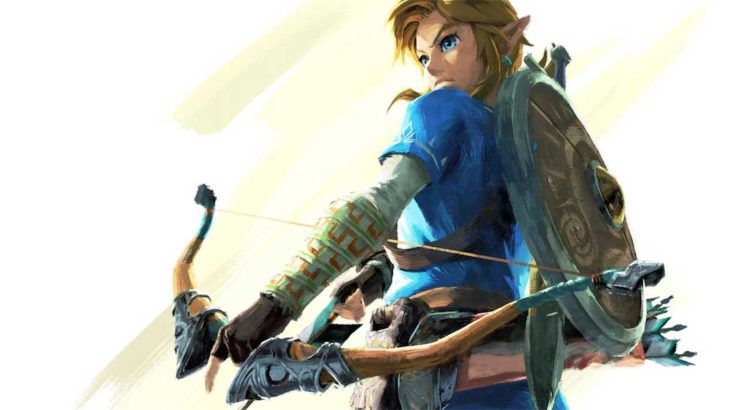Is There Any Continuity in Legend of Zelda
The Legend of Zelda series is known for its complicated timeline. Nintendo producer Eiji Aonuma and series creator Shigeru Miyamoto have been frequently interviewed over the decades since the first game's release in 1986, but even after numerous clarifications and some official books, it's still difficult to explain the timeline to people who have never played the games before. The Legend of Zelda timeline even has a confusing fork in its chronology which separates the games into three storylines. More confusingly, Breath of the Wild has an ambiguous placement at the end of all of the storylines.
Before the release of The Legend of Zelda: Breath of the Wild in 2017, timelines already existed for the series and, although they were plenty ambiguous, these timelines were just slightly less cryptic before the game's inclusion. In 2018, after months of not placing Breath of the Wild anywhere within an official timeline, Nintendo ultimately stuck the game at the end of the entire thing and left it up to player interpretation. However, with secrets in the game directly referencing Wind Waker, BotW might actually take place under one of the three timelines.
The Creation

All three Zelda timelines stem from one singular timeline that encompasses four games from the series - Skyward Sword, Minish Cap, Four Swords, and Ocarina of Time. It's after the events of Ocarina of Time where the major split happens, but before then, the precursors to Link and Zelda had their story told through Skyward Sword which is considered to be the first game in the timeline.
First, the three Golden Goddesses (Din, Nayru, and Farore) created the earth that exists within the Legend of Zelda franchise. They then entrust the Triforce to the goddess Hylia. Demise, the demon king, rises up and tries to take the Triforce, but Hylia manages to seal him away, hides the Triforce in the newly built Skyloft, and prepares for his return by reincarnating herself as Zelda, who resides in Skyloft thousands of years later. After Link becomes the chosen hero and helps forge the Master Sword, he saves the world by destroying Demise, who places the curse of Ganon upon them forevermore.
Generations later, as the lands of Hyrule become more established, an evil Minish warrior named Vaati takes hold of a magical and traditional ceremony to unleash evil that was sealed away, which Link helps reseal only for Vaati to rematerialize as a self proclaimed wind mage whom Link also defeats. These events happen in Minish Cap and Four Swords. More generations later, the events of Ocarina of Time cause a split in the official timeline resulting in three storylines that the games of the series have covered (even though some of the games, such as the original Zelda were released before Ocarina of Time ).
The Hero is Defeated

This storyline is a little more straight-forward than the other two (which are intertwined), and it involves the defeat of Link at the hands of Ganondorf during the events of Ocarina of Time, who is then sealed away within the Dark World that he has created. This timeline also features the most games from the Zelda series on it. According to official sources, the "Hero is Defeated" timeline is covered by A Link to the Past, Link's Awakening, Oracle of Seasons & Ages, A Link Between Worlds, Tri Force Heroes, The Legend of Zelda, and finally, The Adventure of Link, in chronological order.
All of these games involve periods in which Hyrule rises to prosperity only to fall again. They also involve several points in which Link and Zelda defeat Ganon, seal him away, destroy him, or otherwise block his resurgence (which is due to the many enemies that keep trying to resurrect him or take his power). The seven sages of the game world are also frequent targets in these games. Ultimately, the timeline ends with Link defeating Ganon at the end of Adventure of Link.
The Hero is Triumphant

There are two paths in this Zelda timeline. The child timeline covers Majora's Mask, Twilight Princess, and Four Sword Adventures and starts when Link is sent back in time at the end of Ocarina of Time in order to thwart Ganondorf's plans and prevent the destruction of Hyrule. Just as with Link's Awakening, Link ends up going through a big side-adventure, but this time it happens in Majora's Mask. After saving Termina from the destruction of the angry-faced moon, Link leaves the village only to never be seen from again. This iteration of Link eventually dies and is reincarnated as the Hero's Spirit, whom Twilight Princess Link meets throughout the events of that game.
In Twilight Princess, Ganondorf recruits Zant in an effort to regain his power after being banished to the twilight realm following the ending of Ocarina of Time. After Link kills him, Midna, descendant of the Twili people, breaks the link between their world and hers. Hundreds of years later, Ganondorf is reborn into the Gerudo tribe and attempts to seize power once again, this time with the help of Vaati, the sorcerer who Link helped imprison within the Four Sword. Link defeats them and imprisons Ganon in the Four Sword this time, ending the child timeline of The Legend of Zelda.
In the adult timeline, Link disappears after being sent back in time by Zelda at the end of Ocarina of Time which causes the third storyline that encompasses Wind Waker, Phantom Hourglass, and Spirit Tracks. Here, Link's legend fades into history as Ganon escapes his imprisonment, causing the people of Hyrule to ask the gods for help. They in turn flood Hyrule in order to keep Ganon at bay. During Wind Waker, Link and Zelda leave the flooded Hyrule, after defeating Ganondorf, in search of new land. After the events of Phantom Hourglass and Spirit Tracks, a new Hyrule is settled, bringing the adult Link timeline to an end.
Breath of the Wild

As previously mentioned, Nintendo's comments on Breath of the Wild's placement within the already complex Legend of Zelda timeline only complicates things further. Surprisingly, BotW can actually be placed at the end of any of the timelines and it'll make sense, just as Nintendo implied. All three timelines end with some sort of peace happening over Hyrule, with the placement of Hyrule being one of the only major differences, and BotW's backstory occurs over a peaceful period in Hyrule's history. Therefore, Nintendo's comments check out, but the two of the timelines actually have a legitimate claim over which gets the 2017 game.
First, the child timeline actually follows the ending that happens in Ocarina of Time. At the end of the game, Link is sent back and loses Navi, putting him on the path to Termina where the events of Majora's Mask take place. He doesn't lose to Ganon nor does he disappear, which sort of makes every other game that doesn't follow a deviation from the plot (but again these games aren't direct sequels of each other nor were they released in chronological order according to narrative).
The adult timeline has a claim to Breath of the Wild if only for the fact that Outset Island, Wind Waker's starting area , is actually an area in BotW. In Lurelin Village, players can find many of the same buildings and features of Outset Island which gives a strong indication that either this game is directly connected to Wind Waker (and ultimately its timeline) or that Nintendo was just having fun by putting a reference in the game. The likelihood of it being a simple reference is a little slim because that area in the game is way more developed than it would have been had it just been an easter egg.
Otherwise, the story of Breath of the Wild fits at the end of either timeline. The sequel toBreath of the Wild should reveal more when it eventually comes out but until then, fans will have to settle with Nintendo's word on the timeline of The Legend of Zelda.
The Legend of Zelda Breath of the Wild is available now for the Nintendo Switch.
torkelsonwasee1983.blogspot.com
Source: https://gamerant.com/legend-zelda-breath-wild-timelines/
0 Response to "Is There Any Continuity in Legend of Zelda"
Post a Comment